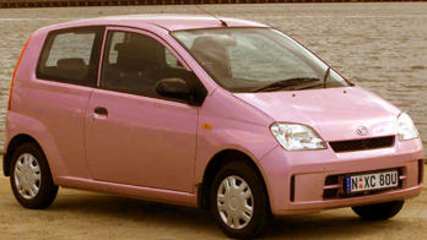Small car fuel efficiency rules
By Ashlee Pleffer · 09 Sep 2006
Industry figures released this week show the real boom in the market has been in four-cylinder cars valued at less than $25,000.Known as the light car segment, sales in the division are up 22.7 per cent for the year to date on last year, while the large car segment is down the same figure. Last month light cars were up by 31.4 per cent on August last year.Federal Chamber of Automotive Industries chief executive Peter Sturrock says this trend has increased over the past couple of years, with a recent acceleration put down to high petrol prices."Well, quite simply because they are more fuel efficient, small and less expensive to purchase in the first place and they're less expensive to run," Sturrock says.A total of 10,806 light cars were sold last month and 77,650 sold this year, which is 14,346 more than last year. Leading the line-up is the Toyota Yaris, with a starting price of $14,990, which recorded 2673 sales in August, taking the total to 18,064 for the year to date.Added to this figure are the remaining 304 Echos that Toyota has sold this year, before the nameplate was changed to be consistent with the Yaris badging used in Europe.Hyundai's small Getz, named Australia's Best Small Car for 2005 by Australia's auto clubs, has also achieved an increase in sales, with 1738 models sold last month, and 13,863 for the year, an 18.4 per cent improvement over the same period last year.Getz prices start at $13,990 and stretch to $18,380. The cheapest car on the market, the Holden Barina, starting at $13,490, has the third highest sales for the segment, with 1091 sales in August and 9567 for the year to date.The Barina is followed by the Suzuki Swift, Honda Jazz and Kia Rio, all recording between 5500 and 6800 sales each for the year-to-date and just under 100 sales in August.Sturrock says while fuel prices are contributing to a shift to these cars, good value at a low price is also converting buyers."The small cars now are very well equipped," he says. "Some years ago they were the basic models, but now they're well equipped with safety and anti-theft, occupant protection, airbags and ABS, and they often have Electronic Stability Control."Features in this segment on cars such as the Yaris and Getz include front airbags, an MP3 compatible CD system, airconditioning, power windows, central locking and ABS. Some even come with Electronic Brakeforce Distribution and anti-skid technology.Holden's Barina offers airconditioning as standard, a feature that has to be bought as an option in the $34,990 base model VE Commodore Omega. The Hyundai Getz also offers a five-year/130,000km warranty.Toyota spokesman, Mike Breen, says this segment also offers a good alternative to second-hand cars."With the options that you can get on a brand new car, plus the new car warranty, it's quite appealing, especially to younger people," he says. And it seems a wide variety of buyers are purchasing these light cars, from students through to families and retirees.Hyundai spokesman Richard Power says its small cars, the Getz and Accent, are finding a market among a variety of drivers."We get quite a few young people buying it as their first new car and there's loyalty from senior motorists, who don't need a big car any more and are very attracted by the long warranty," he says. Overall, the car market has dropped by 3.4per cent on last year, with 642,383 vehicles sold, a decrease of 22,513 vehicles. August was also down from 2005 by 4516 vehicles.In the small car segment, sales are up 3 per cent year-to-date, with the Toyota Corolla the segment leader with 4147 sales in August and 31,705 Corollas sold this year. But small car sales also experienced a slight drop last month, down 1.3 per cent or 244 vehicles.Sturrock says that although the large car segment is down by 26,461 vehicles, it is still an important part of the market."It has reduced over time from what it was to where it is today," he says. "But it's still about 25 per cent of the passenger car market. You see very strong interest in the new Holden Commodore and the new Toyota Camry, there's been an excellent reaction."WHAT'S SELLINGToyota Yaris 18,368Hyundai Getz 13,863Holden Barina 9567Suzuki Swift 6703Honda Jazz 5936Kia Rio 5579Ford Fiesta 4407Mazda2 3934Hyundai Accent 3593Mitsubishi Colt 1516VW Polo 1337Peugoet 206 1071Citroen C3 486Proton Savvy 357smart fortwo 326Renault Clio 173Citroen C2 139smart forfour 132Fiat Punto 113Daihatsu Sirion 40Proton Satria 9Suzuki Ignis 1*Source: VFacts (light car sales 2006 to end August)Note: Yaris sales includes 304 Echo salesTHE CHEAPIESHolden Barina from $13,490Hyundai Getz from $13,990Proton Savvy from $13,990Toyota Yaris from $14,990Hyundai Accent from $15,990Mitsubishi Colt from $15,990Suzuki Swift from $15,990Ford Fiesta from $15,990Honda Jazz from $15,990Kia Rio from $15,990Mazda2 from $16,335Peugeot 206 from $16,990VW Polo from $16,990









